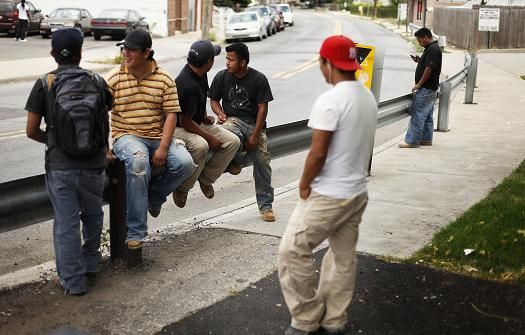Illegal Immigration Drops As US Economy, Demographics Reshape Landscape

A weak economy has driven illegal immigration down to its lowest level in years, according to a new analysis of census data.
While the U.S. Census does not explicitly track the country’s undocumented population, Pew Hispanic Center demographer Jeffrey Passel derived his estimates by subtracting the population of legal immigrants from the country’s total population.
The result: 11.1 million undocumented in the U.S. last year, a drop from a high point of 12 million in 2007, accompanied by a “pretty substantial drop” in overall net immigration, according to Population Reference Bureau demographer Mark Mather.
Although tougher enforcement on the federal and local level may have played a role -- the foreign-born population has declined in Arizona, which passed an immigration law that became a national model for politicians who want to restrict immigration -- Mather said the economy is likely the decisive factor. He noted that low-wage construction and manufacturing jobs, typically a beacon for undocumented immigrants seeking work, continue to be scarce.
“Because we’ve seen this big drop, especially from Mexico, I think this reflects the state of the economy right now,” Mather said. “Until we see some type of a recovery, especially in housing and infrastructure needs and those types of jobs, we could see immigration stay at these low levels a while.”
The data also affirms a trend demographers have been discussing for some time now. Fewer Mexicans are emigrating to the U.S. as more Mexicans in the U.S. return home, resulting in zero net migration.
Shifting emigration trends are also reshaping the picture. More Asians than Hispanics emigrated to the United States last year, the first time that has happened in a century.
America’s Hispanic population is also getting older, a shift from its being dominated by young people who come to the United States for work. Nearly half of the country’s foreign-born population is 45 and older.
The foreign-born are also more likely to attend college, a trend driven in part by the fact that Asian immigrants tend to have higher levels of education than Hispanics, Mather said.
“In some ways they’re starting to more resemble the U.S.-born population,” Mather said.
Those developments could play a role as Congress debates taking up immigration reform. House Republicans recently introduced a bill that would have offered more visas to foreign-born students who come to the United States to study science and technology. While Democrats supported the principle, they opposed the bill because it would have eliminated a visa lottery aimed at unskilled immigrants from underrepresented countries.
© Copyright IBTimes 2025. All rights reserved.





















